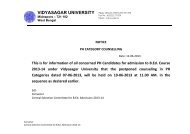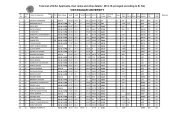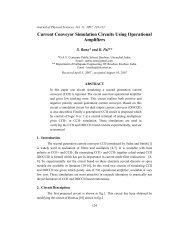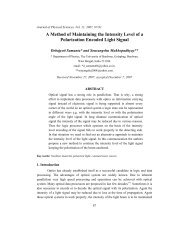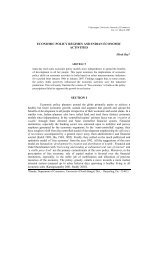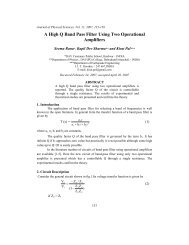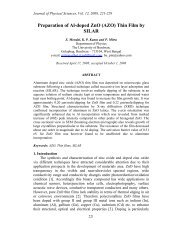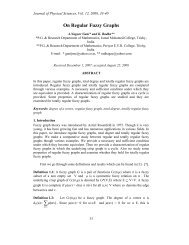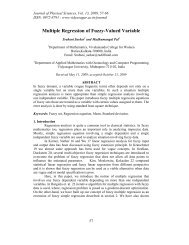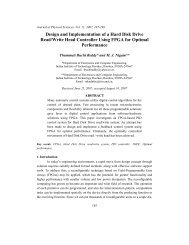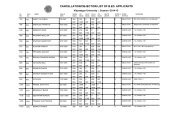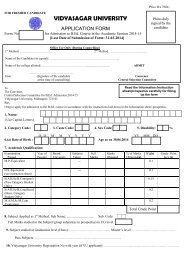VIDYASAGAR UNIVERSITY JOURNAL OF COMMERCE
VIDYASAGAR UNIVERSITY JOURNAL OF COMMERCE
VIDYASAGAR UNIVERSITY JOURNAL OF COMMERCE
You also want an ePaper? Increase the reach of your titles
YUMPU automatically turns print PDFs into web optimized ePapers that Google loves.
Year<br />
ROA<br />
(%)<br />
RONW<br />
(%)<br />
Debdas Rakshit, Chanchal Chatterjee<br />
N.P/Total<br />
funds<br />
(%)<br />
Table-3:<br />
Interest to<br />
Total funds<br />
(%)<br />
Cash/Deposit<br />
(%)<br />
Interest<br />
expended/<br />
Total funds<br />
1995-1996 0.00 6.48 2.05 14.39 19.27 10.52<br />
1996-1997 2.73 23.7 2.73 12.43 12.27 7.97<br />
1997-1998 1.53 22.39 1.98 10.26 11.58 7.38<br />
1998-1999 0.91 22.04 1.23 10.60 8.92 8.29<br />
1999-2000 0.87 14.45 1.11 8.95 7.45 7.00<br />
2000-2001 0.82 13.21 1.01 7.81 7.44 5.27<br />
2001-2002 0.67 7.23 0.42 3.47 6.20 2.50<br />
2002-2003 1.13 18.87 1.14 8.84 8.30 7.50<br />
2003-2004 1.31 21.91 1.40 7.70 8.85 6.00<br />
2004-2005 1.59 19.51 1.36 6.39 7.00 4.46<br />
From the above table, it is evident that the average ROA of the post-merger period (1.10%)<br />
is lower than that of the pre-merger period (1.21%). Similar type of picture has been found<br />
for other three ratios also. The average RONW (16.5%), average Net Profit to Total Funds<br />
(1.07%) and average Interest to Total Funds (6.84%) of the post-merger period are lower<br />
than that of the pre-merger period (17.81%, 1.82% and 11.33% respectively). This is an<br />
indication of the bank’s inability in improving its overall performance after merger.<br />
Compared to the pre-merger period, the extensively lower average values of ROA, NP to<br />
Total Funds, and Interest to Total Funds in the post-merger period indicate the company’s<br />
inability regarding proper utilization of assets or funds as was reflected by ROI also. Hence,<br />
to improve the overall performance of the company, due attention should be given by the top<br />
management in this sensitive area. However, so far as the case of Interest Expended to Total<br />
Funds ratio is concerned, the company has registered significant improvement in managing<br />
its operational activities in cost angle. This is so because the average of this ratio<br />
corresponding to the post-merger period (5.15) has been reduced considerably compared to<br />
the pre- merger period (8.23). This is nothing but the indication of the enhancement of<br />
operational efficiency of the company after the merger. Moreover, the average of<br />
Cash/Deposit ratio (%) in the pre-merger period was 11.90%. But it has been reduced to the<br />
level of 7.56% in the post- merger period. It reflects the efficiency of cash management of<br />
the concerned bank after the merger. The reason behind that can be well-understood by<br />
observing the investment pattern of the company during the study period. The investment<br />
scenario of the company was as follows:<br />
Vidyasagar University Journal of Commerce 87



